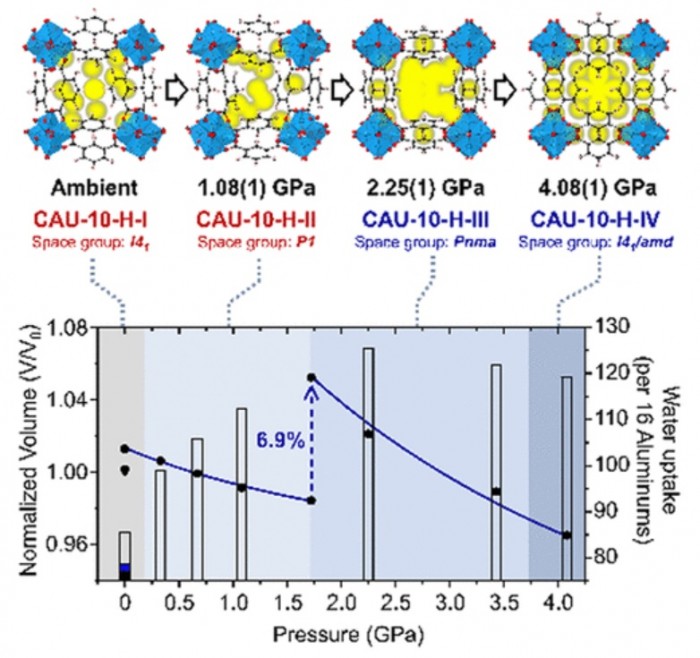“Structuration of Water in Microporous CAU-10‑H under Gigapascal Pressure”
- Authors
J. Choi, T. Vogt, Y. Lee*
- Journal
Journal of the Physical Chemistry Letters
Vol.13, pp.10767-10770, 2022.11 - DOI
Abstract
Employing metal–organic frameworks (MOFs) as water adsorbents has become a flourishing field in recent years. Aluminum isophthalate [Al(OH)(bdc)]·nH2O, referred to as CAU-10-H, is renowned for its high physical and chemical stability under external mechanical stimuli, which is crucial for use in sorption-based heat exchange. We report pressure-induced structural changes and water uptake/release of CAU-10-H in the gigapascal regime. CAU-10-H displays four different phases during pressurization in water up to 4.08(1) GPa. Upon immersion in water at ambient conditions, the unit cell volume expands by 1.3(1)%, by increasing water content from 78.7(1) to 85.6(1) H2O per unit cell. Upon pressurization to 1.08(1) GPa, the water content increases gradually to 112.5(1) H2O per unit cell and reduces the symmetry to P1 phase. At 1.72(1) GPa, a correlated “gate-opening/channel-closing” transition to a centrosymmetric Pnma phase occurs to increase the unit cell volume by 6.9(1)% and water content to 138.8(1) H2O per unit cell. Further increase in pressure to 4.08(1) GPa then leads to a gradual decrease in water content to 119.2(1) H2O per unit cell and redistribution of the inserted water molecules during a “gate-closing/channel-opening” transition to an I41/amd phase. After pressure removal, CAU-10-H reverts to its initial state in terms of crystallinity and water content. This pressure-induced water adsorption/desorption and concerted movements of gate-constraining ligands provides a detailed understanding of the water-MOF interplay, which can be used as a basis for designing new materials, possibly utilizing pressure as a tool for chemical modifications.












